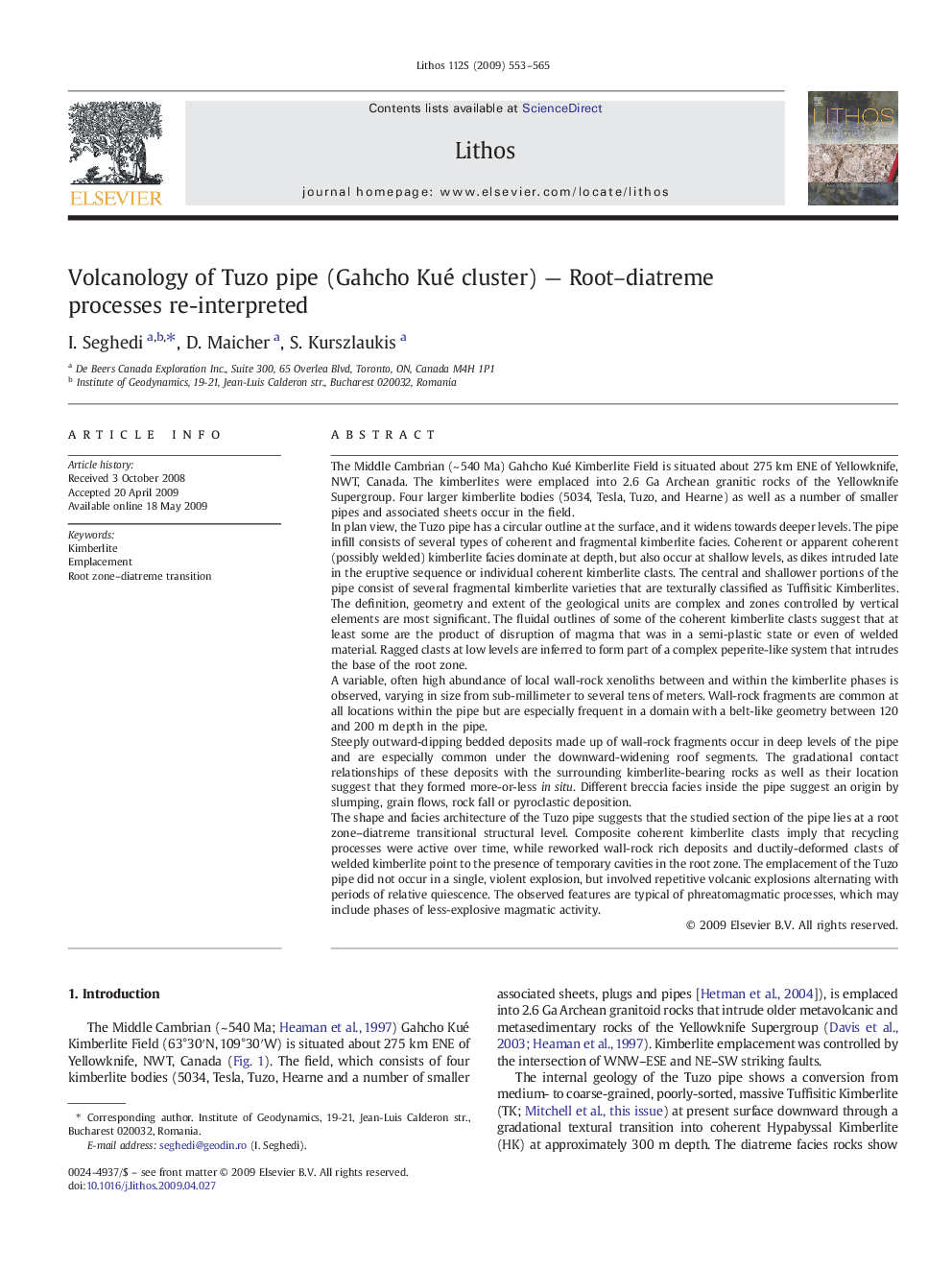| کد مقاله | کد نشریه | سال انتشار | مقاله انگلیسی | نسخه تمام متن |
|---|---|---|---|---|
| 4717290 | 1354429 | 2009 | 13 صفحه PDF | دانلود رایگان |

The Middle Cambrian (~ 540 Ma) Gahcho Kué Kimberlite Field is situated about 275 km ENE of Yellowknife, NWT, Canada. The kimberlites were emplaced into 2.6 Ga Archean granitic rocks of the Yellowknife Supergroup. Four larger kimberlite bodies (5034, Tesla, Tuzo, and Hearne) as well as a number of smaller pipes and associated sheets occur in the field.In plan view, the Tuzo pipe has a circular outline at the surface, and it widens towards deeper levels. The pipe infill consists of several types of coherent and fragmental kimberlite facies. Coherent or apparent coherent (possibly welded) kimberlite facies dominate at depth, but also occur at shallow levels, as dikes intruded late in the eruptive sequence or individual coherent kimberlite clasts. The central and shallower portions of the pipe consist of several fragmental kimberlite varieties that are texturally classified as Tuffisitic Kimberlites. The definition, geometry and extent of the geological units are complex and zones controlled by vertical elements are most significant. The fluidal outlines of some of the coherent kimberlite clasts suggest that at least some are the product of disruption of magma that was in a semi-plastic state or even of welded material. Ragged clasts at low levels are inferred to form part of a complex peperite-like system that intrudes the base of the root zone.A variable, often high abundance of local wall-rock xenoliths between and within the kimberlite phases is observed, varying in size from sub-millimeter to several tens of meters. Wall-rock fragments are common at all locations within the pipe but are especially frequent in a domain with a belt-like geometry between 120 and 200 m depth in the pipe.Steeply outward-dipping bedded deposits made up of wall-rock fragments occur in deep levels of the pipe and are especially common under the downward-widening roof segments. The gradational contact relationships of these deposits with the surrounding kimberlite-bearing rocks as well as their location suggest that they formed more-or-less in situ. Different breccia facies inside the pipe suggest an origin by slumping, grain flows, rock fall or pyroclastic deposition.The shape and facies architecture of the Tuzo pipe suggests that the studied section of the pipe lies at a root zone–diatreme transitional structural level. Composite coherent kimberlite clasts imply that recycling processes were active over time, while reworked wall-rock rich deposits and ductily-deformed clasts of welded kimberlite point to the presence of temporary cavities in the root zone. The emplacement of the Tuzo pipe did not occur in a single, violent explosion, but involved repetitive volcanic explosions alternating with periods of relative quiescence. The observed features are typical of phreatomagmatic processes, which may include phases of less-explosive magmatic activity.
Journal: Lithos - Volume 112, Supplement 1, November 2009, Pages 553–565